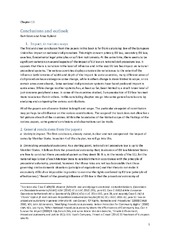| dc.description.abstract | The first and clear conclusion from the papers in this book is far from surprising: law of the European Union has impact on national civil procedure. This might concern primary EU law, secondary EU law, case law, fundamental legal principles or soft law instruments. At the same time, there seems to be significant variation on several aspects of the impact of EU law on national civil procedure law. It appears that there is variation in the level of influence and in the way EU law has impact on national procedural systems. The various countries display considerable variation as to the extent of the influence both in terms of width and depth of the impact. In some countries, many different areas of civil procedure have undergone some change, while in others change is more limited in scope, or on certain areas even absent. Some national civil procedure systems have faced profound impact in some areas. While change in other systems has, at least so far, been limited to a much lower level of just concerns peripheral areas. In some of the countries studied, Europeanisation of EU law has met more resistance than in others. In this concluding chapter, we go into some general conclusions by analysing and comparing the various contributions. | en_US |


 English
English norsk
norsk